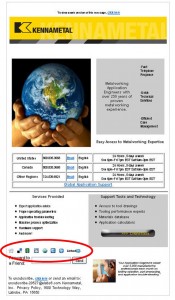Powerful Viral Video from Old Spice
Old Spice wrapped up a phenomenal viral marketing campaign this week that significantly leveraged social media channels, just as MarketingSherpa published our 2010 Viral and Social Marketing Hall of Fame.
What started as a funny Super Bowl Ad featuring a spokesman with an over-the-top ego and a penchant for manly nonsense turned into millions of views on YouTube this winter. The agency behind the ad, Wieden+Kennedy, followed up with additional videos, but the effort didn’t stop there.
For two days this week, the agency posted dozens of video responses to comments on Old Spice’s YouTube, Facebook and Twitter profiles. Every response is a unique, hilarious video of the Old Spice spokesman, actor Isaiah Mustafa, standing in a towel in front of a shower.
The videos are steeped in the same humor as the initial ads — supplying dozens of additional videos to an audience that expressed a strong craving for them. They also gave the campaign an exciting, real-time creative edge by directly interacting with the audience and quickly churning out videos.
To further the campaign’s reach, the team posted video responses to celebrities and other folks with major online followings, including:
o Perez Hilton — celebrity gossip blogger
o George Stephanopoulos — ABC News journalist
o Gizmodo — technology blog
o Alyssa Milano — American actress
o Kevin Rose — founder of Digg and other startups
Responding to these gatekeepers with personalized, high-profile and hilarious videos proved flattering enough to earn mentions in their respective media outlets. This brought the campaign to new audiences, further building the viral snowball.
Iain Tait, Global Interactive Creative Director, Wieden+Kennedy, told Kai Ryssdal on American Public Media’s Marketplace that the effort “certainly makes people kind of consider Old Spice in a new light again. And that has certainly been brought out in some of the conversations that we’re seeing online.”
With such a stunning viral success, where does the campaign go from here?
UPDATE 7/28: The campaign is proving to be a smashing success. Nielsen reports sales of Old Spice Body Wash increased 107% over the past month and 55% over the last three months, according to Brandweek.










